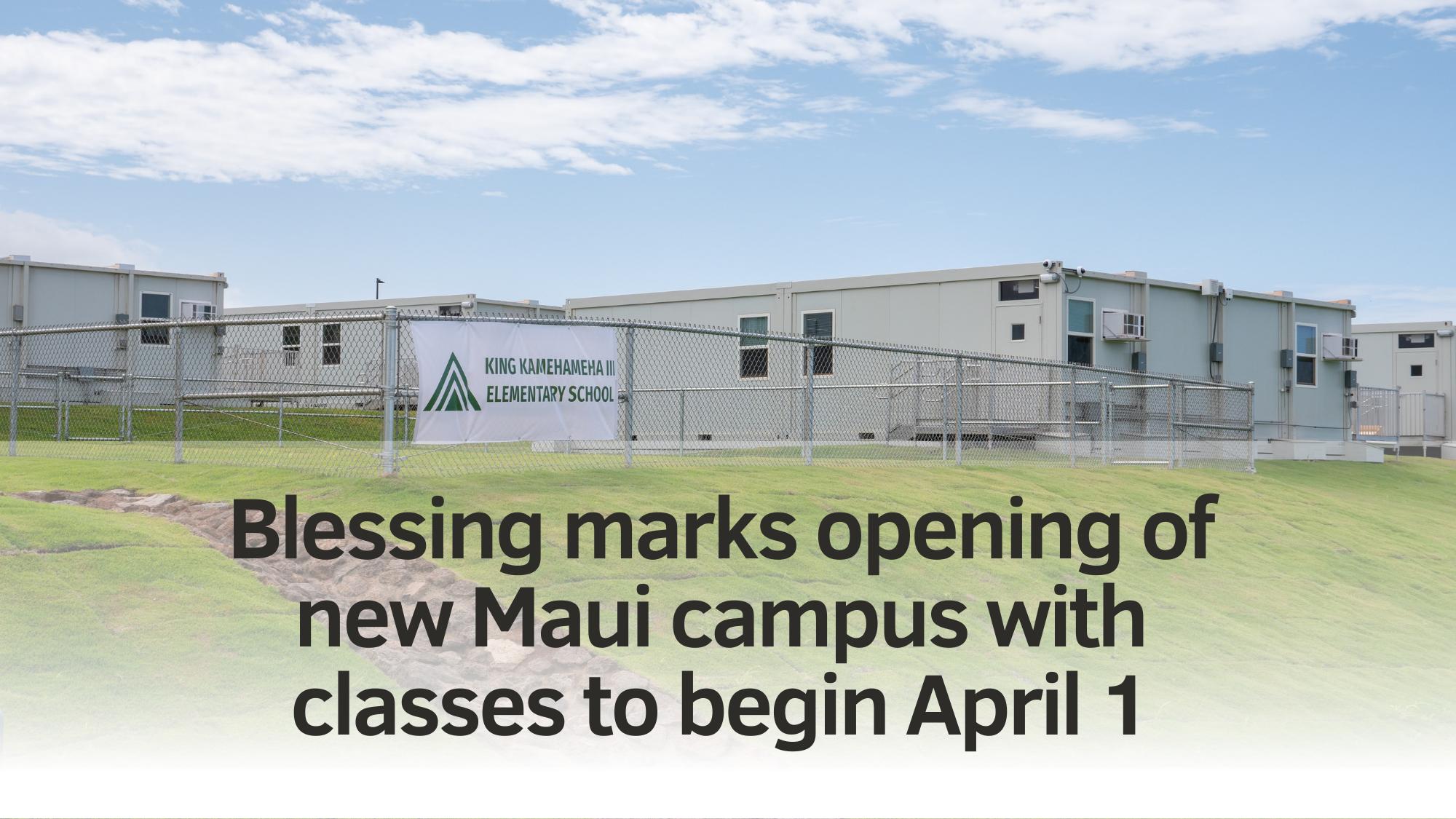King Kamehameha III Elementary at Pulelehua to welcome 350 students
Posted: March 27, 2024
Teachers, staff and students at Maui’s King Kamehameha III Elementary School have a new campus to call home.
About two dozen teachers and school administrators Monday took part in a blessing and mele for the newly constructed temporary campus, along with key stakeholders who helped bring it to life: Gov. Josh Green, U.S. Sen. Mazie Hirono, U.S. Rep. Jill Tokuda, Board of Education Chair Warren Haruki, state Rep. Justin Woodson, who represents Central Maui and chairs the House Committee on Education, and various federal, state, and county agencies and community organizations.
Classes will begin April 1, just under eight months after deadly wildfires destroyed the school’s original campus on the Lahaina waterfront, where Hawai‘i’s third king once ruled the Hawaiian kingdom. The new campus was built in 95 days in the upcoming Pulelehua development near Kapalua Airport.
“This is for the teachers. Thank you, teachers, for understanding, for caring for the kids, especially on Maui. I know how hard it’s been,” said Gov. Josh Green. “Our hearts are with you, and your hearts are with the keiki.”
After the Aug. 8 fires, students and their families turned to alternative education sites, including other Maui and off-island schools and community learning hubs. Then last October, the school reopened for full, in-person learning in tent structures co-located on the Princess Nāhi‘ena‘ena Elementary campus.
Counselor Lisa Kuramata says the new campus finally allows them to make “this space ours, and so I’m excited. I’m excited to be with the kids and to help the teachers transition, adjust, whatever they need.”
HSTA President Osa Tui, Jr. said, “Teachers are excited to have their students back at their own campus, and excited for the students who are going to be returning to their campus now that they’re north of the burn zone.”
King Kamehameha III Elementary at Pulelehua will welcome about 350 students with 30 air-conditioned modular classrooms, an administration building, library, student support center, cafeteria and play areas. Some classrooms will be used as resource rooms for art, computer lab and special education, and for Kaiapuni Hawaiian language immersion education.
David Brown, a 5th grade special education teacher, said, “There’s lots of space. There’s lots of rooms. There’s lots of grass. There’s a nice basketball court — I’m a basketball fan, so I’m glad to see that — and there’s a nice big covering here. So I think it’s pretty amazing that the whole thing was done as quickly as it is.”
“Our kids are special,” Kuramata, the school counselor, said. “They’ve just been through so much, but then you can’t even tell that they just went through this crazy time, that they still live in it, a lot of them. You cannot tell because they’ve built such inner strength through this. They’re awesome. I look up to the kids. I learn from the kids, and I just love being with the kids.”
The temporary site will operate for up to five years. Officials say a permanent replacement school will be planned with community input alongside the broader rebuilding of Lahaina.
HSTA President Tui said the union will continue to support and advocate for impacted HSTA members.
“We look forward to working with all of our teachers to make sure that their needs are met, and that the needs of the community are met as we move forward in this process,” Tui said.
Brown said HSTA’s leadership during this difficult time “has been outstanding, and personally, I’ve benefited from some of the gifts from HSTA because of the fire, and so I appreciate that.
“God bless you. You’re doing a good job,” Brown said.
The Federal Emergency Management Agency (FEMA) helped fund the $78 million school while the U.S. Army Corps of Engineers (USACE) handled the construction of the project and sub-contracted Pono Aina Management, an 8(a) Native Hawaiian Organization.







